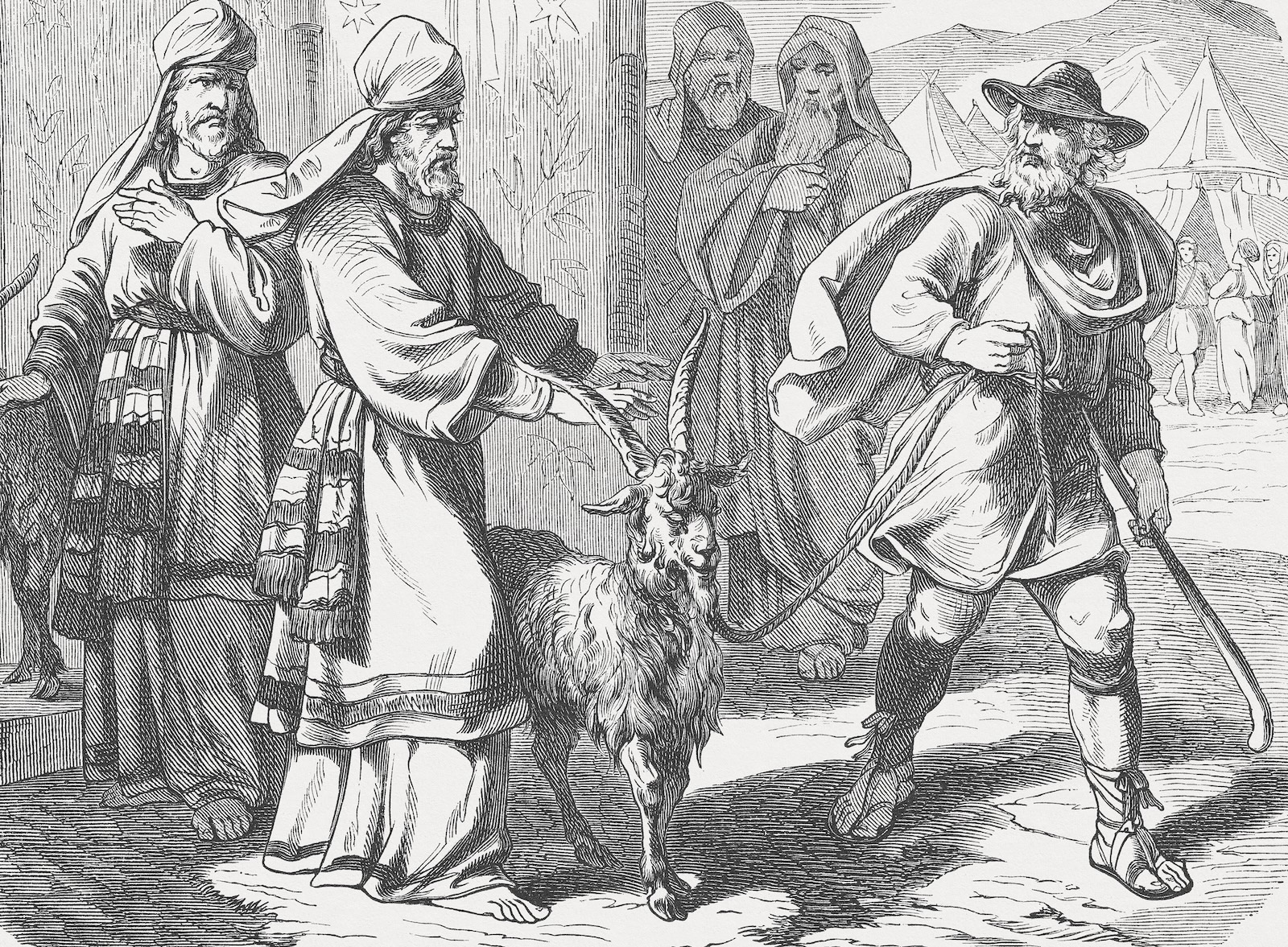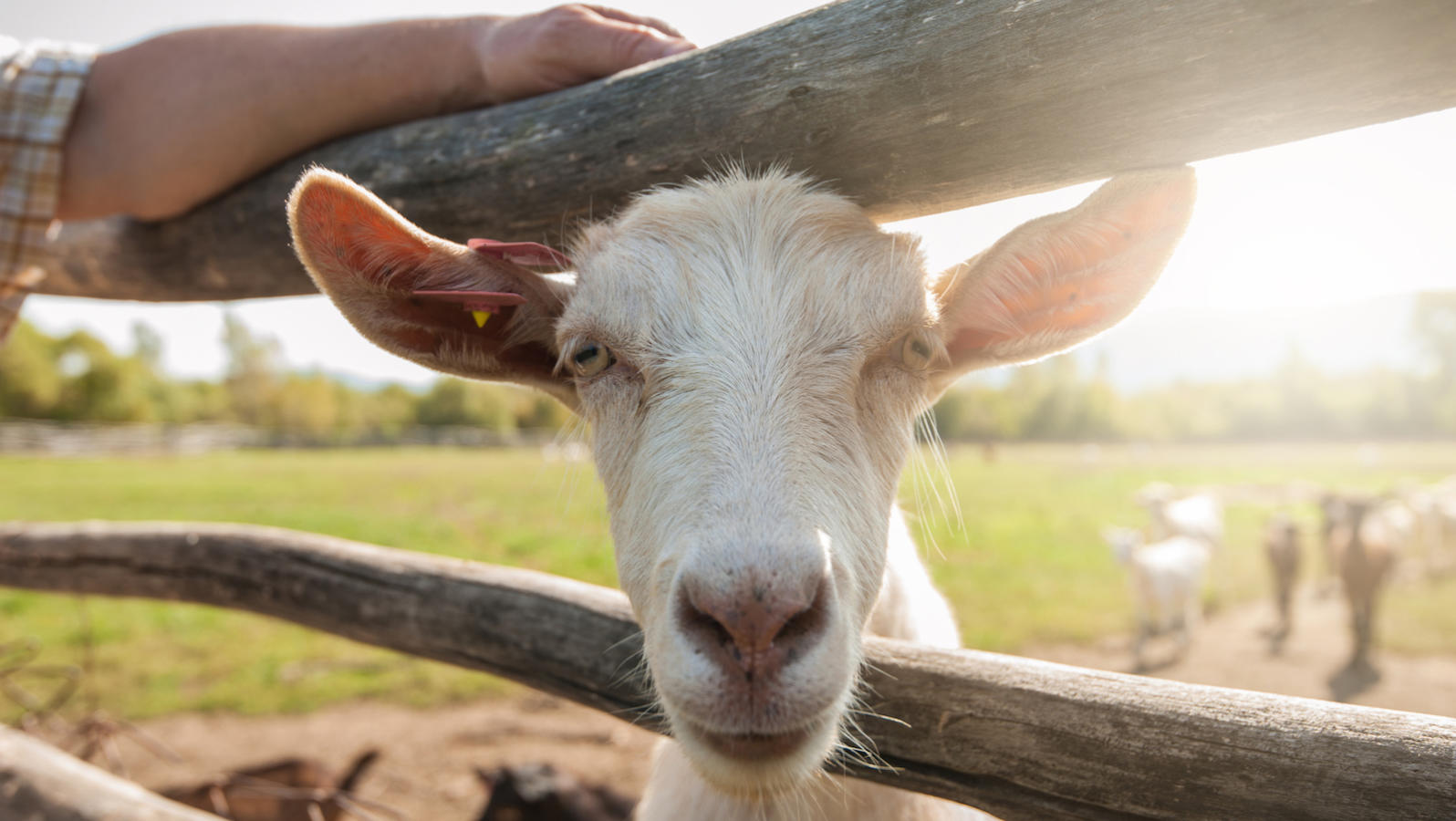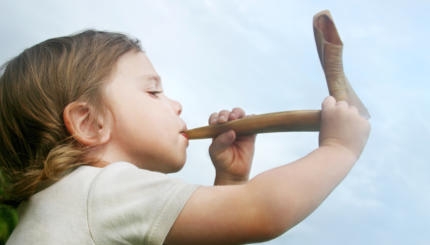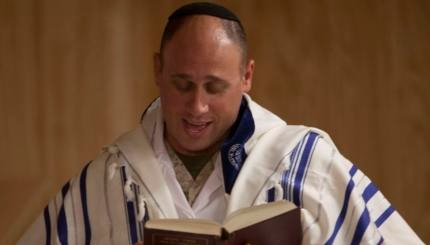Yom Kippur, the Jewish Day of Atonement, is the holiest day on the Jewish calendar. It’s a day of fasting, repentance and killer caffeine withdrawal headaches. However, the holiday has some lesser-known associations as well.
1. The word “scapegoat” originates in an ancient Yom Kippur ritual.
Jews historically have been popular scapegoats — blamed for a wide range of ills not of their creation. But, and we’re not kid-ding, they really do deserve blame (or credit) for the term scapegoat. In Leviticus 16:8 (in the Torah portion Achrei Mot), the High Priest is instructed on Yom Kippur to lay his hands upon a goat while confessing the sins of the entire community — and then to throw the animal off a cliff.

2. Another animal ritual, swinging a chicken around one’s head, has sparked considerable controversy, and not just from animal-rights activists.
In 2015, the kaparot ritual, in which a chicken is symbolically invested with a person’s sins and then slaughtered, spurred two lawsuits in the United States: one by traditional Jews claiming their right to perform it was being abridged by the government and another by animal-rights activists. Centuries earlier, the ritual drew criticism from notable sages like the Ramban (13th century) and Rabbi Joseph Caro (16th century), whose objections had less to do with animal welfare than with religious integrity.
3. Yom Kippur was once a big matchmaking day.
The Talmud states that both Yom Kippur and Tu B’Av (often described as the Jewish Valentine’s Day) were the most joyous days of the year, when women would wear white gowns and dance in the vineyards, chanting, “Young man, lift up your eyes and see what you choose for yourself. Do not set your eyes on beauty, but set your eyes on a good family.” Given the aforementioned caffeine headaches and the difficulty of making a decision on an empty stomach, we’re glad this particular tradition is no more.
With your help, My Jewish Learning can provide endless opportunities for learning, connection and discovery.
4. Food and drink are not the only things Jews abstain from on Yom Kippur.
Other traditional no-no’s on Yom Kippur include bathing, wearing perfume or lotions, having sexual relations and wearing leather shoes. The less-than-attractive aroma resulting from the first two restrictions (not to mention the romantic restrictions imposed by the third) may explain why the day ceased to an occasion for finding true love.
5. In Israel, Yom Kippur is most bike-friendly day of the year.
Although many Israelis are secular, and there is no law on the books forbidding driving on Yom Kippur, virtually all the country’s Jews avoid their cars on this day. With only the occasional emergency vehicle on the road, bikers of all ages can be seen pedaling, even on major highways. The video above shows how a group of (non-fasting) cyclists seized the opportunity to bike from Tel Aviv to Jerusalem and back, “Stopping only for water and to complain about the heat!”
6. Eating a big meal before the holiday begins will make your fast harder, rather than easier.
Traditionally, the meal eaten before beginning the fast is supposed to be large and festive, following the talmudic dictum that it is a mitzvah (commandment) to eat on Erev [the eve of] Yom Kippur, just as it is a mitzvah to fast on Yom Kippur itself. However, eating extra food — particularly in one last-minute feast — does not help to keep you going for 24 hours, says Dr. Tzvi Dwolatzky of Israel’s Rambam Health Care Campus. He suggests eating small amounts of carbohydrates (bread, potato, rice, pasta), some protein (fish, chicken) and fruit.
7. On Yom Kippur in 1940, London’s Jews kept calm and carried on.
In the midst of the Battle of Britain, the relentless Nazi bombardment of London that began in September 1940, the city’s synagogues went on with their Yom Kippur services. According to JTA, while air raid warnings “twice disturbed” morning Yom Kippur services on Oct. 12, 1940, “most synagogues carried on regardless” and a “large proportion of the men attending services wore uniforms of the various forces.”
8. Yom Kippur’s Kol Nidrei services are the only night of the entire Jewish calendar when a prayer shawl is worn for evening prayers.
According to the late Rabbi Louis Jacobs, the tallit (prayer shawl) is worn during Kol Nidrei as “a token of special reverence for the holy day.” It is traditional to wear a tallit or a white garment for the entire holiday, with the color white symbolizing both our spiritual purity and our removing ourselves from the vanities of the material world. Many people actually wear a white robe called a kittel.
9. A Virginia rabbi’s pro-civil rights movement sermon on Yom Kippur in 1958 riled up local segregationists and sparked fears of an anti-Semitic backlash.
JTA reported that Virginia’s “Defenders of State Sovereignty” group demanded that local Jews “move quickly to refute and condemn” Rabbi Emmet A. Frank of Alexandria’s Temple Beth El for his sermon criticizing the state’s “massive resistance” to school desegregation and said that if had intended to destroy Christian-Jewish relations “he could not have been more effective.” While a “leading member” of the Reform temple reportedly said a “considerable” number of congregants worried Frank’s stand “might result in increased anti-Semitism,” others “sided with the rabbi, holding that he held a spiritual and moral duty to speak out for social justice.” The congregation stood by Frank, and the Washington Post published an editorial calling him a “courageous clergyman.” Learn more about Jews in the Civil Rights movement.
Kol Nidre
Pronounced: kohl NEE-dray or kohl nee-DRAY, Origin: Aramaic, literally "all vows," this is the name for the service and central prayer on Yom Kippur eve, which is considered the holiest night of the year.
tallit
Pronounced: tah-LEET or TAH-liss, Origin: Hebrew, prayer shawl.
Torah
Pronunced: TORE-uh, Origin: Hebrew, the Five Books of Moses.
Yom Kippur
Pronounced: yohm KIPP-er, also yohm kee-PORE, Origin: Hebrew, The Day of Atonement, the holiest day on the Jewish calendar and, with Rosh Hashanah, one of the High Holidays.



